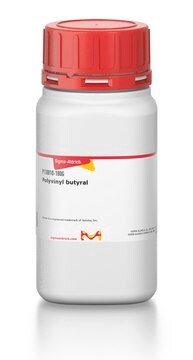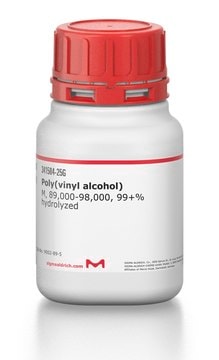223883
Zinc iodide
≥98%
Synonym(s):
Diiodozinc, Zinc diiodide
Sign Into View Organizational & Contract Pricing
All Photos(1)
About This Item
Linear Formula:
ZnI2
CAS Number:
Molecular Weight:
319.20
EC Number:
MDL number:
UNSPSC Code:
12352302
PubChem Substance ID:
NACRES:
NA.23
grade:
for analytical purposes
form:
powder
Recommended Products
grade
for analytical purposes
Assay
≥98%
form
powder
reaction suitability
reagent type: catalyst
core: zinc
mp
445 °C (lit.)
density
4.74 g/mL at 25 °C (lit.)
SMILES string
I[Zn]I
InChI
1S/2HI.Zn/h2*1H;/q;;+2/p-2
InChI key
UAYWVJHJZHQCIE-UHFFFAOYSA-L
Looking for similar products? Visit Product Comparison Guide
Application
Zinc iodide can be used:
- As an activator to synthesize poly(vinyl methyl ether) via living cationic polymerization. ZnI2 is known to produce living vinyl ether polymerizations.
- To prepare precursor solutions for lead halide perovskite solar cells. The addition of ZnI2 leads to higher stability against environmental moisture when introduced into perovskite cells.
Signal Word
Warning
Hazard Statements
Precautionary Statements
Hazard Classifications
Aquatic Acute 1 - Aquatic Chronic 1 - Eye Irrit. 2 - Skin Irrit. 2 - STOT RE 2 Oral
Target Organs
Thyroid
Storage Class Code
13 - Non Combustible Solids
WGK
WGK 3
Flash Point(F)
Not applicable
Flash Point(C)
Not applicable
Personal Protective Equipment
dust mask type N95 (US), Eyeshields, Gloves
Choose from one of the most recent versions:
Already Own This Product?
Find documentation for the products that you have recently purchased in the Document Library.
Customers Also Viewed
Loreta A Muscarella et al.
ACS applied materials & interfaces, 11(19), 17555-17562 (2019-04-17)
We present a one-step method to produce air-stable, large-grain mixed cationic lead perovskite films and powders under ambient conditions. The introduction of 2.5 % of Zn(II), confirmed by X-ray diffraction (XRD), results in stable thin films which show the same
Mohammad Saquib et al.
Carbohydrate research, 341(8), 1052-1056 (2006-03-28)
A new, efficient method has been developed for converting acyl-, arylalkyl- and alkyl-protected glycals into corresponding 2,3-dideoxy-alpha,beta-unsaturated carbohydrate enals utilizing the in situ generated push-pull effect resulting from the synergistic combination of HfCl4 and ZnI2 in catalytic amounts. This new
M Benchimol et al.
Experimental parasitology, 59(1), 51-58 (1985-02-01)
The zinc iodide-osmium tetroxide technique was used to analyze the distribution of the endoplasmic reticulum-Golgi complex system of Tritrichomonas foetus. Interconnections between the cisternae of the endoplasmic reticulum as well as between cisternae of the Golgi complex were observed. The
Tatsushi Imahori
Yakugaku zasshi : Journal of the Pharmaceutical Society of Japan, 124(8), 509-517 (2004-08-07)
A novel type of deprotonative functionalization of aromatics was accomplished with a phosphazene base (t-Bu-P4 base). For various nitrogen heteroaromatics and benzene derivatives, deprotonative 1,2-additions proceeded with the t-Bu-P4 base and ZnI(2) as an additive in the presence of carbonyl
Jie Ma et al.
Chemistry, an Asian journal, 5(10), 2214-2220 (2010-08-03)
Transition-metal-activated alkynes or allenes can accept nucleophilic attack and undergo direct addition of the nucleophiles to the unsaturated bonds or trigger subsequent rearrangement reactions. This chemistry has witnessed increasing development in recent years. In this report, we have focused on
Our team of scientists has experience in all areas of research including Life Science, Material Science, Chemical Synthesis, Chromatography, Analytical and many others.
Contact Technical Service












